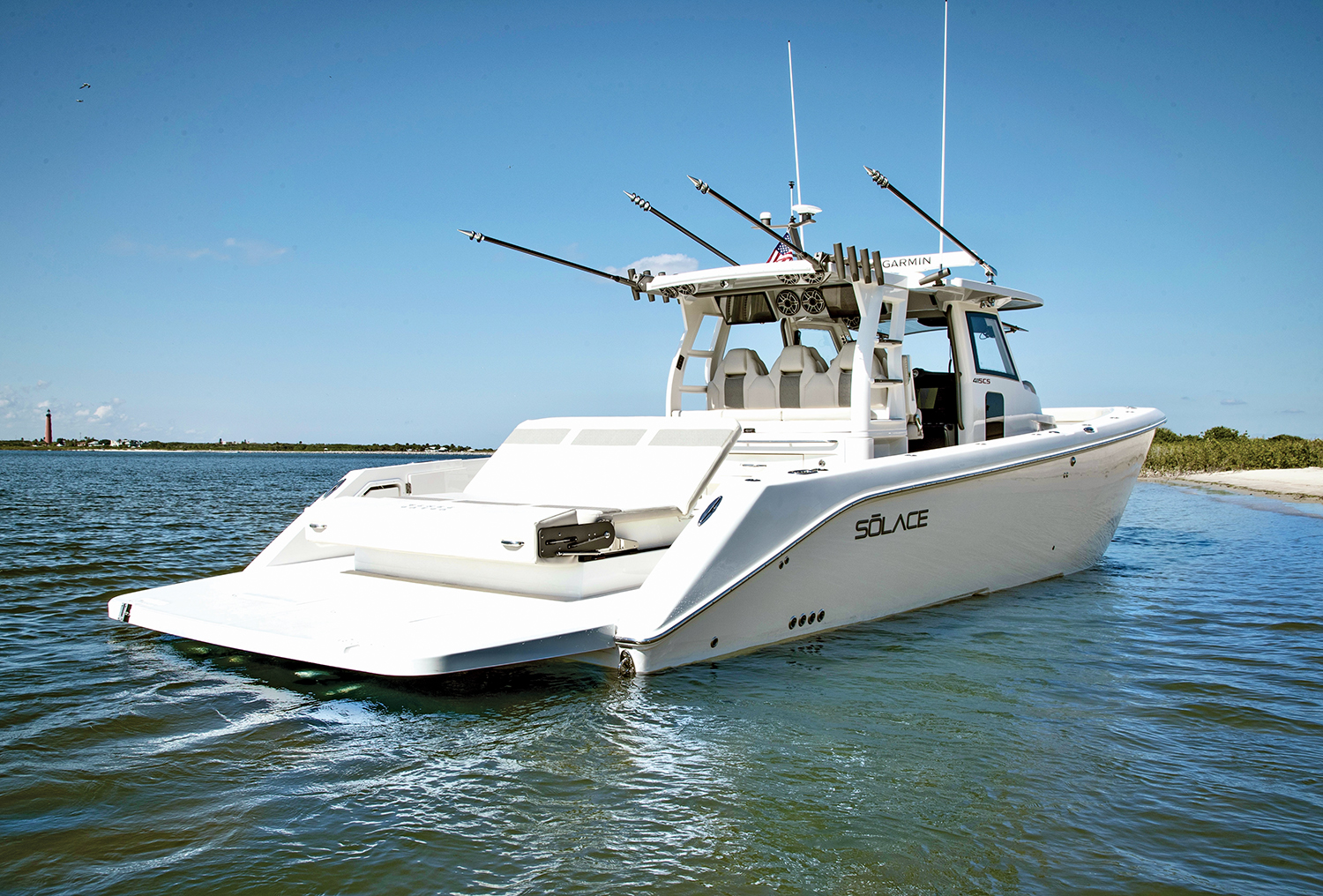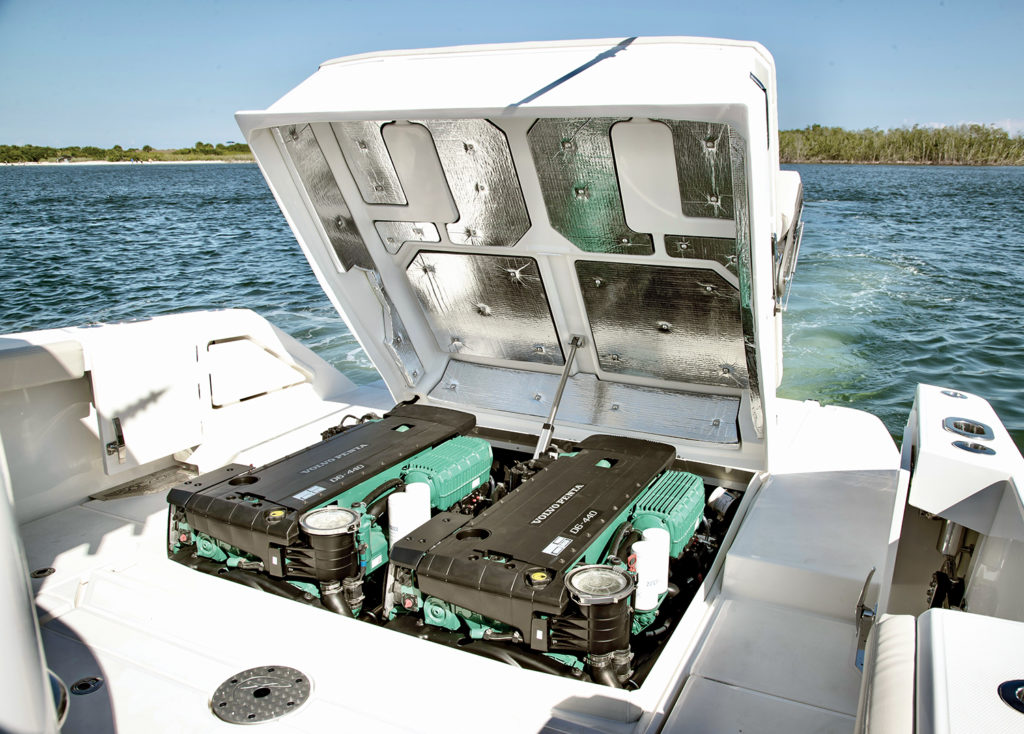Still some blue skies for sterndrives

By David Gee
While sterndrives may never sit atop the propulsion category sales charts again, the sterndrive space still continues to attract interest, iteration, investment – and new fans.
The numbers
When I began the research for this story, the first person I reached out to was numbers and industry data guru Jack Ellis. He is the founder and managing director of Miami-based Info-Link Technologies, a company that tracks marine industry sales trends and boat registrations. He was also a featured speaker at the 2021 Boating Industry ELEVATE Summit in Atlanta.
“Despite the fact that U.S. sterndrive boat sales are only about 10,000 units per year these days, there are over 1.3 million sterndrive boats currently registered in the U.S.,” began Ellis with his thoughtful reply to my query.
That is the same starting point I hear whenever I talk to leaders at Ilmor, Mercury Marine and Volvo Penta about the sterndrive space. To paraphrase, it’s basically the message that “while annual unit sales are well off from their peak, there are a still a lot of outdrives in the water, so the category is still relevant!”
Jack found some sales figures to corroborate that sentiment.
“Like the rest of the market, new sterndrive boat sales increased significantly during the summer and fall of 2020 – the first time this segment showed year-over-year gains since 2005,” stated Ellis.
He said much of this growth can be attributed to first-time boat buyers, many of whom purchased runabouts, presumably to accommodate younger families.
In fact, more than 36% of all new sterndrive boats were purchased by first-time boat buyers in 2020.
“This was a 10% increase over 2019, which is especially impressive when you consider this outpaced inboard, outboard and jet-powered boats, all of which also experienced significant first-time boat buyer growth,” continued Ellis.
What goes up, does eventually come down though, and that was the case with sterndrive sales. Ellis said despite a healthy 2020, new sterndrive boat sales fell again in 2021.
“It’s unclear whether this was due to limited supply or a reduction in demand,” he said. “We think it’s a little of each.”
Continued iteration and improvement
Over the past 10 years, Volvo Penta – the company that brought to market the first gas sterndrives in 1959 – has certainly done its part to continue to create demand by upgrading and modernizing its sterndrive offerings.
First was the decision to replace Volvo Penta’s cast-iron blocks with GM’s V6 and V8 all-aluminum engines.
“With these new engines, we were able to introduce features like closed freshwater cooling, as well as features like common rail direct fuel injection, catalytic converter and variable valve timing, providing improved torque and lower emissions,” said Jens Bering, vice president, marine sales, at Volvo Penta of the Americas.
The second big step, according to Bering, was the revolutionary Forward Drive (FWD), which opened a totally new category of multi-purpose sterndrive boats optimized for the popular sport of wake surfing.
“The Forward Drive has exceeded our expectations and the number of FWD boats in operation is still growing at a steady rate today,” he said.
Sterndrive center console
While sterndrives continue to carve out some success in the towboat and bowrider space, the hot-selling center console category has been the nearly exclusive domain of outboards.
So it was interesting to see the enthusiastic response on the docks at the Fort Lauderdale International Boat Show in October when the new SŌLACE 415CS center console powered by twin Volvo Penta D6-440 Aquamatic DPI inboards debuted.
“The first thing you notice when you look at the new 415CS is a clean transom that allows you full access to your boat,” said Todd Albrecht, president of SŌLACE Boats. “The new 415CS is the result of a close collaboration between SŌLACE and Volvo Penta design and engineering teams. We wanted to solve some commonly seen missed opportunities within the center console market like increased versatility with the transom, extended range, less fueling time at the dock, quieter cruise, improved maneuverability and more.”
The package also includes features such as active corrosion protection, joystick driving and docking with silent “clunk free” hydraulic shifting, active ride control, automatic trim and list system and coordinated turn control.
“In the SŌLACE 415CS, our twin diesel Aquamatic DPI package also increases operating range by 50% and reduces fuel consumption by up to 42% at cruising speeds over a comparable outboard configuration, appealing to today’s generation of sustainability-conscious boaters,” said Bering in closing.
A sterndrive that appeals to today’s generation of boaters. A few years ago I might have scoffed at that statement. But not anymore.
I remember sitting down to have a coffee chat in Washington, D.C. with Paul Ray, the president of Ilmor Engineering, at the very first American Boating Congress I ever attended.
When the conversation turned to sterndrives, I recounted my less-than-awesome experience with the category back in the ‘70s, when as a little kid with no upper body strength I struggled with deep water slalom starts behind an anemic four-cylinder.
“The sterndrive space is night and day different than it was then,” he assured me. “There’s still a considerable market for sterndrives, and from our perspective anyway, we believe investment and innovation will continue. You need to get back in a modern sterndrive.”
After spending some time on Biscayne Bay riding in – and driving – Ilmor OneDrive-equipped Formula bowriders as well as an Aviara luxury dayboat with a 6.2L, 430-HP Ilmor sterndrive, I can vouch for the accuracy of Ray’s statement.
As for the future, since I gave Info-Link’s Jack Ellis the first word, I’ll also give him the last word. “It’s interesting. Two decades or so ago, there were over 75 mainstream boat builders offering sterndrive models. Today, there are fewer than 20, with half a dozen companies accounting for almost three-fourths of the sterndrive boat market. Perhaps in 20 years we’ll be saying the same thing about outboard engines because electric and hydrogen-powered engines dominate the market.”






